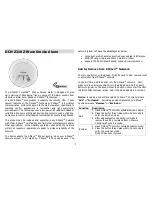
Mercedes-Benz Body & Equipment Guideline for Metris - BM 447, Version November 27, 2015.
!
Please observe the revision notes compared to 09/18/2015 ! Only print out complete sections of the current version!
38
4.7 Threaded and welded connections
4 Planning of bodies
4.7
Threaded and welded connections
4.7.1
Threaded connections
If it is necessary to replace standard bolts/nuts with
longer ones, use only bolts/nuts:
•
of the same diameter
•
of the same strength grade
•
of the same type
•
of the same thread pitch.
a
WARNING
Do not modify any bolted connections that are
relevant to safety, e.g. that are required for wheel
control, steering or braking functions, otherwise they
may no longer function properly. The driver could
lose control of the vehicle as a result and cause an
accident resulting in serious injury or death.
Parts must be refitted in accordance with DAG service
instructions and using suitable standard parts. We
recommend DAG Metris genuine parts.
•
National and state regulations must be observed
for all assembly/installation operations.
•
It is prohibited to shorten the free clamping length,
change to a stretch shank or use screws/bolts with
a shorter free thread.
•
No design modification is possible if screws/bolts
are tightened to the required torque and tightening
angle by Daimler AG.
•
The settling behavior of threaded connections must
be taken into account.
Information about Metris after-sales instructions is
available from any qualified Mercedes-Benz Metris
dealer.
Additional components must exhibit an identical or
higher strength than the previous clamped assembly.
The use of Metris tightening torque specifications
requires a friction factor in the range of 0.08 to 0.14.
We recommend the use of genuine Metris parts.
a
WARNING
Screws/bolts or nuts with locking splines, micro-en-
capsulated screws/bolts or nuts and self-locking
nuts must always be replaced after a single use.
Before new micro-encapsulated screws/bolts or
nuts are screwed in, the mating thread must be
cleaned and recut or the nuts replaced to remove all
residual screw locking compound. Finally, the recut
through-tapped or blind-tapped holes must be blown
out with air
because any adhesive residue in the thread would
prevent correct tightening of the screws/bolts or
nuts.
If these instructions are not observed, bending
forces could act on the screw/bolt or nut due to the
lack of pretension and cause the screw/bolt or nut
to break. The driver could lose control of the vehicle
and cause an accident.
a
WARNING
There is an increased risk of injury when micro-
encapsulated screws/bolts or nuts are loosened
because of the sudden loosening of the screws/
bolts or nuts. For this reason, ensure you have suffi-
cient freedom of movement when loosening micro-
encapsulated screws/bolts.
















































